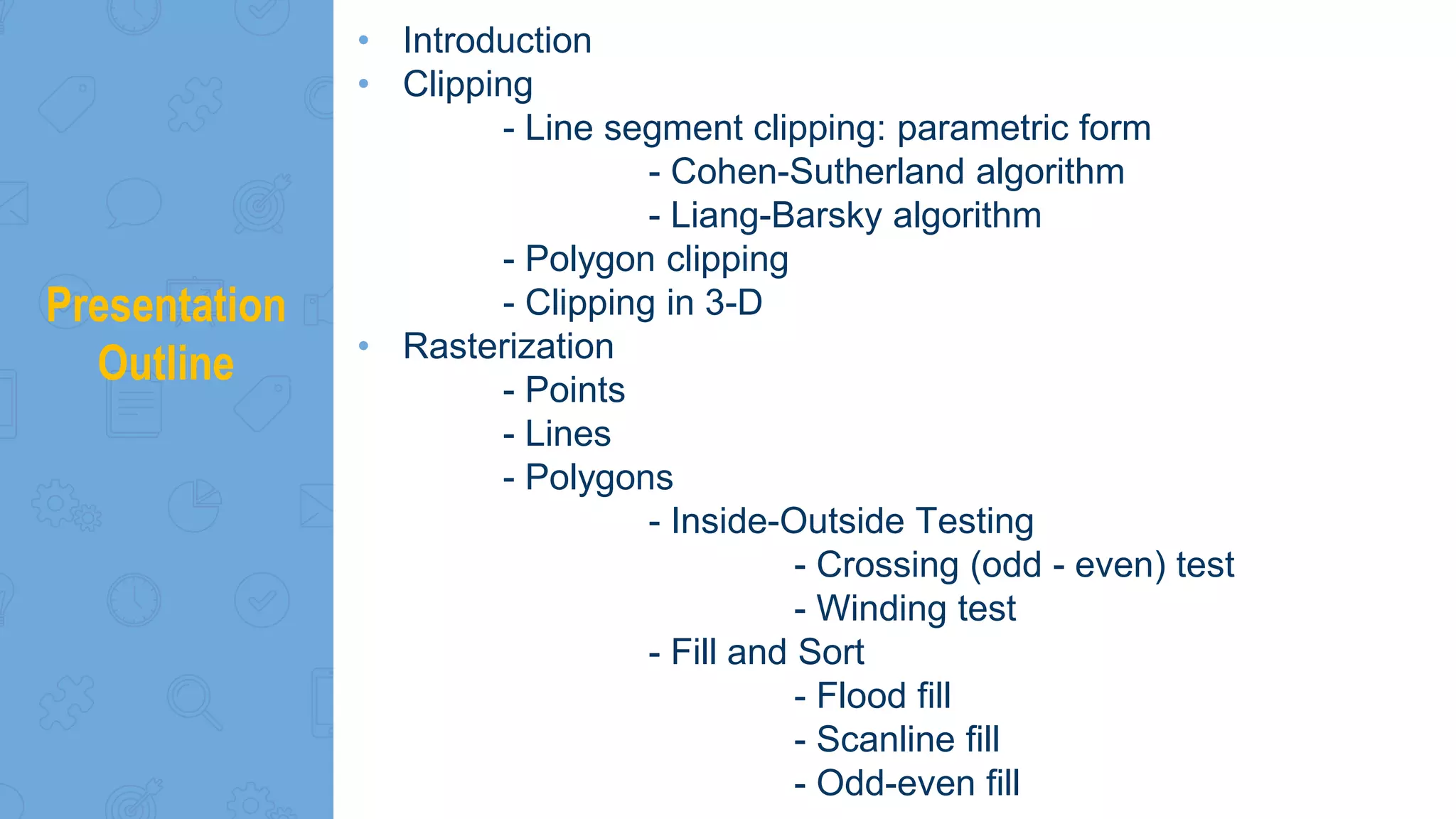The document discusses techniques for clipping and rasterization in computer graphics. It covers line segment clipping algorithms like Cohen-Sutherland and Liang-Barsky. It also discusses polygon clipping, including brute force, triangulation, and a black box pipeline approach. Finally, it covers rasterization techniques for points, lines, and polygons, including inside-outside testing methods, fill algorithms like flood fill and scanline fill.





































